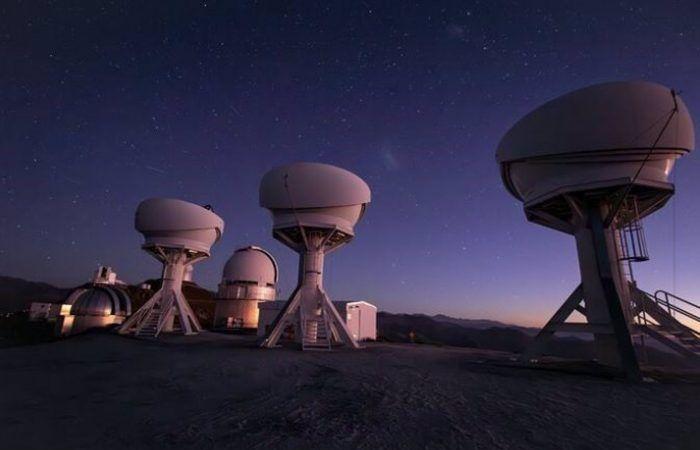For the third consecutive time, CATA researchers are recognized among the best in their areas nationally, achieving outstanding positions internationally, after the recent publication of the Research.com ranking.
The classification presents the best scientists in the world in various disciplines of knowledge, whose publications are a contribution to future work, which allows continued progress in various scientific areas, especially for astrophysics and the astronomical community.
To create this list, bibliometric data until November 2023 was considered, the position of which exclusively includes articles and citations within the discipline examined.
Hence the importance of the recognition that professionals linked to CATA received in a new edition of the “Best Physics Scientists” ranking, created and published by the site research.com, which chooses the best researchers in their respective disciplines, among a universe of more than fifty thousand professionals around the world.
First places
At the national level, four CATA researchers stand out in the first places, among them Franz Bauer and Dante Minniti in first and second place, along with Ezequiel Treister, in sixth and Manuela Zoccali, in eighth position.
For Ezequiel Treister, Director of CATA, “the important thing is not only that it values the quantity of publications made, but also highlights their quality, a measure that is achieved through the citations made by other researchers.”
“It is excellent news since it confirms the good work we are doing at the Center. We had set very high goals for scientific productivity, expecting more than 200 publications a year, which have already been widely surpassed, but we are also very happy about the impact they generate in the astronomical community,” highlights the director.
This is in line with what Research.com proposes when making this list, an initiative that seeks to motivate academics, companies and politicians from around the world to examine where the best experts are going so that the entire research community discovers who the best experts are. main references in their disciplines, both internationally and within national research institutions.
CATA Success
The recognition has been valued by CATA researchers, not only for the prestige it generates, but also for the impact it may have in the future, details Franz Bauer, associate researcher and professor at the Pontifical Catholic University.
“Obtaining the recognition is a good surprise for a researcher, since it validates and celebrates years of dedication, effort and significant contributions to the field of astronomy and highlights, not only the impact of my work in the scientific community, but also that of my team at PUC and the strength of the collaborations I have formed over the years,” he said.
“We hope that this recognition will have a positive impact for CATA, increasing its visibility and prestige in the international scientific community. It can motivate researchers and students to continue conducting high-level research, contributing to the advancement of knowledge and maintaining a commitment to scientific excellence. It can also motivate attracting new collaborations, funding and talent to the institute.”
The interests of this award-winning professional focus on the study of the active nuclei of galaxies, their demography and evolution, as well as the structure and evolution of supermassive black holes, supernovae and transient phenomena.
Challenges
Meanwhile, Dante Minniti, principal investigator of CATA and Director of the Astrophysics Institute of the Andrés Bello University, specialist in Exoplanets and Astrobiology, emphasized the challenge that this achievement also implies.
“We are living in extraordinary times in the era of big data and artificial intelligence, with great challenges that go far beyond experience. At CATA we participate in this era of revolutionary discoveries in astrophysics as explorers and science educators. For this reason, I think it is also a nice recognition for our Center, where we are very enthusiastic about doing science, dissemination and of course teaching to train the scientists of the future,” details the astronomer who works in the search for extrasolar planets, having found the date about twenty of them.
The collaborative factor associated with publications is a fundamental aspect to achieve these achievements and this is highlighted by Ezequiel Treister, within the pillars that the institution has proposed to promote.
“Here there are at least two or three large projects that we are doing at CATA and that are part of large-scale collaborations and that reflect the leadership of our researchers worldwide. In addition, we target seven areas where we study everything from the large-scale universe to the solar system, including asteroids and meteorites. And we are proud that the presence of CATA in this ranking occurs with transversal research in all these areas, that is, we leave a mark for future studies,” explains the researcher also belonging to the Pontifical Catholic University, whose specialty is based on holes. Supermassive blacks and the evolution of galaxies.
female representative
Among the top positions in this ranking at the national level there is only one woman, Manuela Zoccali, a researcher associated with the Center and professor at the PUC who highlights this aspect.
“We have made a lot of progress in this area in recent years, but indicators like this also reveal that there is still a lot to do. “Astronomy in Chile is consolidated worldwide, thanks to the observatories, but also, thanks to the collaborative financing of institutions such as CATA and MAS, which have been and continue to be key to allowing the development of the local community,” he expressed. .
“I am happy to be in the ranking, although the number and impact of my publications are only one aspect of my scientific work, and do not necessarily reflect the entire film,” emphasizes the astronomer who focuses her work on researching the stars of the central region. of the Milky Way. Its objective is to elucidate the formation process of spiral galaxies like ours, focusing on the observation and analysis of the oldest star populations.
The Center for Astrophysics and Related Technologies has more than 60 professionals from main researchers to postgraduate students who carry out extensive collaborative work, which must be coordinated both in its structure and in its financing.
For director Ezequiel Treister “in Chile we have a very extensive technical and telescope infrastructure and we have the privilege of being able to access it.”
“Just as we need to coordinate that part, we must also provide the technical, human and resource possibility to support research that can take five or ten years and, in that aspect, the role of CATA is fundamental to provide that support and achieve these objectives. I feel happy, on a personal basis, to also be part of this outstanding ranking worldwide, but what gives me the most satisfaction is to see that this shows that we are on the right path and we are doing things well in the CATA”, he concludes. he.
For research and statistics, log in HERE.
-
To find out more about what is happening in the world of science and culture, join our Cultívate community, El Mostrador’s Newsletter on these topics. Sign up for free HERE.






